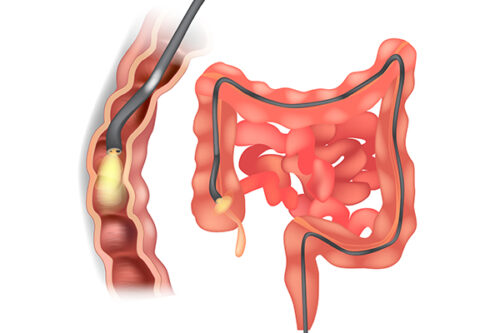When Friends Ask: “Why Did You Quit Meat?”

By John McDougall, MD
In my youth, I thought meat meant good health and strength. I reasoned this must be ideal food for my body, because my body is made up of meat; just like the body parts of cows, pigs and chickens; therefore, these foods must contain every nutrient I could possibly require. Logically, could anything be better for building muscle than eating muscle? This kind of faulty reasoning caused me to suffer problems as ordinary as acne and as rare as a stroke by the time I was 18 years old. I am alive and healthy today at 74 because almost 55 years ago I changed to primarily plants for my foods. (It is not too late for you.)
Meat Is Cat Food—Plants Are People Food
Every animal has an ideal diet. Meat is an ideal food for my pointy-toothed carnivorous cats and my powerful-jawed omnivorous dog. Cows and cockatoos are herbivores, and would soon sicken on a diet of meat. The same happens with people when they consume a meat-centered diet.
Undeniable Evidence That Meat-Centered Diets Are Wrong:
Nearly Everyone Who Eats That Way Is Sick
Affluent people can afford to eat a diet with a central focus of beef, pork and/or chicken, and almost all do. Most also have one or more risk factors that predict premature death and illness:1
- 1/3 have elevated cholesterol
- 1/3 have hypertension
- More than 30% are obese
- More than 65% are overweight
- 10% are diabetic
Diseases of affluence are epidemic among meat-eaters:
- 1/2 die prematurely of heart disease
- 1/2 of men develop life-threatening cancer
- 1/3 of women develop life-threatening cancer
- Over age 60, 30% have gallbladder disease
- One in seven suffers with serious arthritis
- 60% complain of bad breath (halitosis)
- Most have GI troubles (indigestion to constipation)
Meat Is Promoted for Its Good Nutrition
According to the National Cattlemen’s Beef Association (NCBA), “Red meat plays an important role in a healthful diet by providing more than 10 percent of the Recommended Daily Allowances (RDA) for protein, iron, zinc, niacin, Vitamins B6 and B12.”2 These nutritional facts are accurate for people eating the typical rich diet, and will scare many of them into including generous amounts of meat—unless they consider the fact that nutritional deficiencies due to protein, iron, zinc, niacin, Vitamins B6 and B12 are essentially unheard of in people who have enough of any kind of food to eat. Do you know anyone with “deficiencies diseases” caused from lack of any of these nutrients? (Almost all iron deficiency in people is due to bleeding, not from dietary deficiency.)
National Cattlemen’s Beef Association (NCBA) also fails to explain in their promotional materials that meat fails to provide sufficient amounts of calcium, dietary fiber, essential fats, and vitamin C to support the health of human beings. Nor do they mention the problems caused by the “excesses” in meat. Have you ever heard of illnesses due too many calories, or too much fat, cholesterol, protein, infectious microbes, and chemical contaminants? With excess lies the problem.
People Don’t Like the Taste of Meat
Advertisements for Pizza Hut’s Meat Lovers’® Pizza, Arby’s Super Roast Beef Sandwich®, Wendy’s Buffalo Crispy Chicken®, and McDonalds Double Quarter Pounder® could lead us to believe that “the meat” is the main attraction. However, it’s not the slices of tasteless brown beef hidden in the center of the Arby’s sandwich that people want—instead, they salivate over the “green leaf lettuce and ripe tomatoes, all topped with a zesty red sauce on a toasty sesame bun.”
The human tongue has no taste buds for the protein and fat—the ingredients in the beef—but we do have taste buds on our tongue’s tip which are excited by sugar and salt—the ingredients that make up the lettuce, tomato, sauce, and buns—these are what drive repeat sales. My cats would enjoy the meat. They have taste buds for amino acids (the building blocks of proteins) embedded in their tongues’ surfaces; but the garnishes would be wasted on these carnivores.2a Not only do people have tastebuds for sweet as found in fruits and honey, we are also blessed with strong taste buds specifically intended for us to seek out and enjoy starches, such as corn, potatoes and rice.2b
What’s Meat’s Attraction?
If people have no senses for appreciating the taste of meat, then why is it so popular? Meat’s appeal is driven by money and egos. Until recently, the high cost of meat restricted it to the plates of the wealthy. This is a status symbol—meat-eating enhances class distinction. Consider the Beef Industry’s most famous slogan: Beef—Real Food for Real People. This is known as a bandwagon argument—used to appeal to a person’s desire to be popular, accepted or valued—ignoring evidence and relevant reasoning.3 The message implies that food, other than beef, is not real food, and that people who do not eat beef, are not real people.3
If eating muscle turned into body muscle then most men living in affluent societies would resemble bodybuilders without a noticeable potbelly—no point in arguing the obvious. Scientific research confirms that meat is viewed as a superior masculine food.4 If the truth were known, real men would switch to real plant foods overnight. During a man’s reproductive years meat-eating decreases ejaculate volume, lowers sperm count, shortens sperm life, and causes poor sperm motility, genetic damage, and infertility.5,6 Meat-eaters are likely to become impotent because of damage caused to the artery system that supplies the penis with the blood that causes an erection.7 Erectile dysfunction is more often seen in men with elevated cholesterol levels8 and high levels of LDL “bad” cholesterol9—both conditions are related to habitual meat-eating. Later in life, men who follow a meat-centered diet face prostate enlargement (benign prostatic hypertrophy) and prostate cancer.10,11 Beef—Real Food for Real Sexual Dysfunction.
Meat Has Unhealthy Ingredients
A look at the individual components of meat explains why this is such an undesirable food.
There are no carbohydrates in meat. Carbohydrate is the human body’s primary intended fuel – ask any endurance athlete. Carbohydrate is essential for the brain, red blood cells and kidney cells (glomeruli cells).
Meat is usually high in fat. The fat promotes obesity, type-2 diabetes, heart disease and many forms of cancer.
Meat is usually high in protein. Excess protein overworks and damages the liver and kidneys.
Meat proteins are high in sulfur. The sulfur-containing amino acids cause foul-smelling body odor, breath and flatus and promote heart disease, inflammatory bowel disease, cancer and shortened longevity.
The combination of the qualities of high protein and high acid cause the loss of bone resulting in osteoporosis. The dissolved bone often solidifies in the kidney system forming calcium-based kidney stones.
There is no fiber in meat. Fiber provides the bulk of the stool, controls blood sugar and cholesterol and detoxifies cancer causing chemicals.
Cholesterol is only found in animal foods. Excess accumulates in our arteries, skin, tendons and all other tissues.
Meat concentrates environmental contaminates. Toxic chemicals concentrate in food supply as they rise up the food chain.
Infections agents live in meat. In the USA, there are approximately 76 million cases of food-borne illness annually.
Antibiotics are in meat. Antibiotics are used to prevent animal infections and stimulate growth.
Meat-Eating Bad for Planet Earth
There are four well traveled roads to eating a meatless diet: health, personal appearance, the environment, and animal rights. As a medical doctor, I have mostly traveled the roads of health and appearance for the sake of my patients. That journey would have not been possible if I had not changed my personal diet almost 50 years ago. People have trouble seeing beyond their own habits—ridding my dinner plate of animal foods has allowed me to become sensitive to equally important issues—the environment and animal rights.
Many people would rather die than give up their meat—and that’s OK with me. But I find it unacceptable that some of these same people would be willing to destroy Planet Earth than give up their meat. According to a report, Livestock’s Long Shadow –Environmental Issues and Options, released in November of 2006 by the United Nations Food and Agriculture Organization, livestock emerges as one of the top two or three most significant contributors to every one of the most serious environmental problems.
The killing and suffering of animals for human food might be justified, if meat were necessary for better human health, but the opposite is the case. Informed people should not remain silent about senseless suffering of food-animals.
We stand on the brink of life-ending health and environmental catastrophes. It is time we shed our hypocrisies. Doctors interested in healing patients of dietary diseases must eat a plant-food-based diet themselves. People who profess their love for animals must stop eating them. A true environmentalist will no longer contribute to the major source of planetary destruction by feeding himself and his family with products from the livestock industry. Making meat-eating a social disgrace in this generation, just like we did with cigarette smoking in the last generation, is a fundamental change that must take place in order to advance our society to the next level and ensure our personal survival.
Additional information on this subject is found by referring to my Hot Topics—Protein, Meat and Poultry.
References:
1) Mulrow C, Kussmaul W. The middle-aged and older American: wrong prototype for a preventive polypill? Ann Intern Med. 2005 Mar 15;142(6):467-8.
2) http://www.beefusa.org/newsscientificevidencepointstoimportanceofmeatinamericandiets4394.aspx
2a) Li X, Li W, Pseudogenization of a Sweet-Receptor Gene Accounts for Cats’ Indifference toward Sugar. PLoS Genet. 2005 Jul;1(1):27-35.
2b) Lapis TJ, Penner MH, Lim J. Humans Can Taste Glucose Oligomers Independent of the hT1R2/hT1R3 Sweet Taste Receptor. Chem Senses. 2016 Nov 1;41(9):755-762.
3) http://www.termpapergenie.com/decision_making.html
4) Roos G. Men, masculinity and food: interviews with Finnish carpenters and engineers. Appetite. 2001 Aug;37(1):47-56.
5) Allen NE. Hormones and diet: low insulin-like growth factor-I but normal bioavailable androgens in vegan men. Br J Cancer. 2000 Jul;83(1):95-7.
6) Rozati R . Role of environmental estrogens in the deterioration of male factor fertility. Fertil Steril. 2002 Dec;78(6):1187-94.
7) Feldman HA. Erectile dysfunction and coronary risk factors: prospective results from the Massachusetts male aging study. Prev Med. 2000 Apr;30(4):328-38.
8) Bodie J. Laboratory evaluations of erectile dysfunction: an evidence based approach. J Urol. 2003 Jun;169(6):2262-4.
9) Walczak MK Prevalence of cardiovascular risk factors in erectile dysfunction. J Gend Specif Med. 2002 Nov-Dec;5(6):19-24.
10) Suzuki S. Intakes of energy and macronutrients and the risk of benign prostatic hyperplasia. Am J Clin Nutr. 2002 Apr;75(4):689-97.
11) Divisi D, Di Tommaso S, Salvemini S, Garramone M, Crisci R. Diet and cancer. Acta Biomed. 2006 Aug;77(2):118-23.
Recommended Articles

Advertising Passed Off As Research, Confuses the Public Again

The Dangers of Aggressively Treating High Blood Pressure





